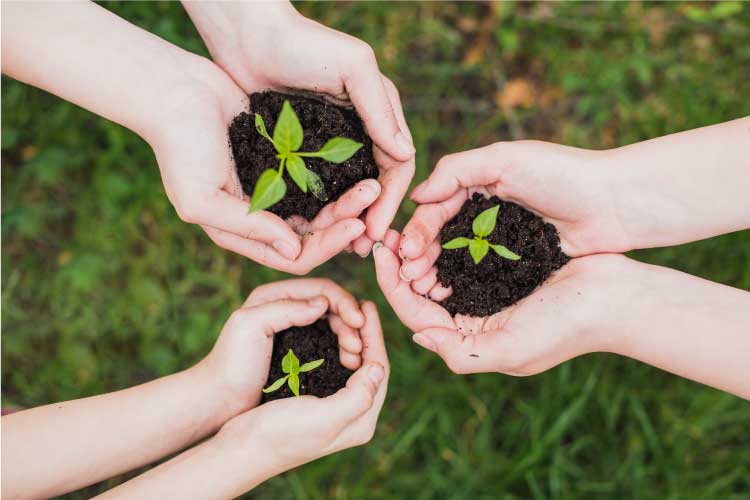It’s encouraging to see that everywhere you look these days, families seem to be adapting a greener, more sustainable lifestyle. You see more shoppers carrying their own reusable bags, diners at restaurants whipping out their own metal straws, more and more households separating and recycling their trash, etc. The sustainable lifestyle is becoming a popular choice for many households these days – if you haven’t jumped in yet, what are you waiting for?
Going green (another term for adapting a sustainable lifestyle) means so much more than just cutting back on stuff – it’s also eco-friendly and helpful for the environment. In the long run, it will save you money too, for if you’re truly all for it, you’ll find yourself deliberately cutting back on electricity, avoiding wastage in any way be it food or anything else, and also, you’ll rethink the purchase and use of costly items in the household that serve little purpose other than just adding on to your belongings.
So, are you ready for some small changes? If so, you’ll soon be discovering how exciting the challenges of going green can be for your whole family, even for the little ones!
Here are some simple steps to get you on the right track.
Walk the talk first
If you intend to teach your children to live a green lifestyle, go ahead and set a good example first. Children are greatly influenced by their parents, and when they see their parents showing care and consideration for the environment, animals, and people with whom they share the world, they will eventually follow suit. So, be a life-size example and watch them grow up as experts in greener, more sustainable living. For example, what would you normally do if you find a paper cup left on the stool at a public park? If your child were to observe you picking it up and placing it in the trash bin, even if it wasn’t your piece of trash in the first place, he or she will begin to understand the value of keeping public places clean, especially if you do it often enough. When it comes to a lot of things in life, your actions truly speak louder than words, believe us!
To get them interested, get them involved
Children are generally eager to contribute to grown-up activities, so use this opportunity to teach them well! Have them carry a small bucket of vegetable scraps to the compost bin, or let them help sort your recycling, though you should handle the potentially sharp edges on cans and glass. Older children can also help with the gardening, the household recycling or they may want to get involved with cleaning up their neighborhood in our community gotong-royong style! Make these kinds of eco-friendly activities a family-time priority and in no time, your kids will be taking the lead – mission accomplished!
Evaluate and de-clutter
If you’ve watched and followed the petite Marie Kondo, a Japanese woman who has a special knack for organising, and who helps people declutter their lives, you’ll realise by now that overloading your home and your life with material things is hardly what you need to have a happy, meaningful life. When it comes to anything at all, even toys for your kids, choose quality over quantity. Think before making any purchases and also, talk to family and friends about not overwhelming children with too many gifts and about checking with you first if they’re considering a big gift. Encourage kids to donate toys and clothes they no longer use to the less fortunate.
Encourage conservation
Explain to your kids the plus points of resource-conserving habits such as switching off lights and turning off the water when brushing their teeth. Remember though, that if these are somewhat new concepts to them, it might take some time to get used to. You did not change overnight, and you shouldn’t expect your children to, either. Start with the things that are easiest to change and remember that every little bit helps. Add more changes gradually, and your family will soon be living greener without even realizing it.
Grow some food!
Growing your own vegetables, composting, and mulching, are all ways to contribute to a green environment in your home. Eggshells, fruit rinds and coffee grounds are great for compost. These are simple and easy tasks that will allow you to cut down on waste, save money and reuse as well recycle natural resources.
Make your own natural household cleansers
Using natural cleansers or DIY cleansers that use household items is also a step you can take. For example, you can clean glass with vinegar and newspaper, or you can use baking soda instead of scouring powder. You can also add three tablespoons of baking soda and a few drops of lemon juice (or even any citrus essential oil of your choice) to a spray bottle filled with plain water and use it as a spray-and-wipe for tables, kitchen counters, bathtubs, etc. These are things that you may not think of much, but with a little research and knowledge you’ll start to need less and less of the chemical-laden cleaning solutions sold at the stores.
















